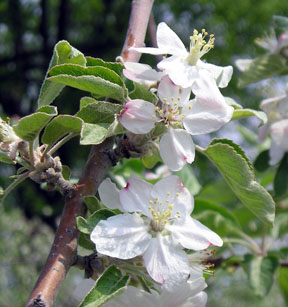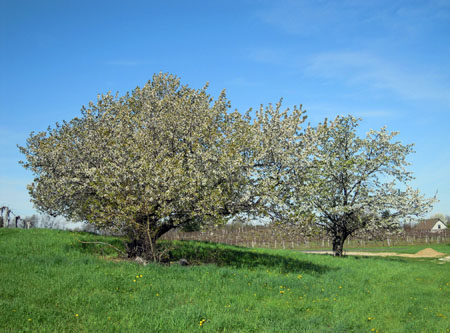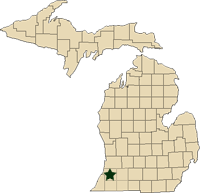Fire blight blossom infections in Southwest Michigan
Summer-like heat brings on apple bloom. Thunderstorms cause fire blight infections.
|
Hot, humid summer conditions in the last three days have moved fruit crops rapidly. Heavy thunderstorms moved across the region from the southwest to the northeast last night. This wetting period, with five to six hours of leaf wetness and temperatures in the mid-60s, resulted in infection periods for several important fruit diseases including fire blight. Near record high temperatures with a continued chance (50 percent) of thundershowers, especially in the southern areas, are forecast for today. Weather conditions and several disease models are available at Enviro-weather.

Apple blossoms Wednesday, April 12, 2011.
Apples and pears are at risk of fire blight. Summer-like conditions with high temperatures into the 80s the last two days moved apples from first bloom to full bloom. Many apple growers have already applied antibiotic sprays in anticipation of using Kasumin for fire blight where streptomycin resistant strains have been documented. We have all four conditions for a fire blight infection; open blossoms, high bacteria populations, high temperatures, and rain to move the bacteria down to the base of the flower.
The interactive fire blight tool on Enviro-weather is predicting infection periods both yesterday and today with Epiphytic Infection Potential (EIP), a measure of the fire blight bacteria population, at values well above the 100 needed for infection. Apple growers who have already used another fire blight material during bloom can use Kasumin. Growers should have the Section 18 Kasumin label in their possession. The short wetting period was a light apple scab infection in a few sites.

Sweet cherries in bloom.
All blooming stone fruit are at risk of blossom brown rot, and growers need to protect cherries, peaches and plums against blossom brown rot. Cherries are also at risk of cherry leaf spot where the leaves have unfolded.
Blueberries are at risk of mummyberry. A six-hour wetting period with a temperature of 65°F is sufficient to cause a shoot strike infection. Many trumpets have dried out but some are still capable of releasing spores and new trumpets have emerged in some fields. Growers still need to protect against mummy berry shoot blight.



 Print
Print Email
Email Southwest Region.
Southwest Region.




